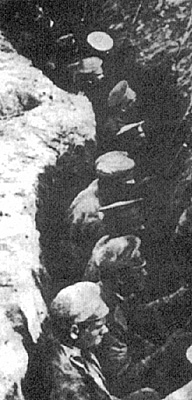 This article introduces you to MiH's new release, Lodz 1914.
This article introduces you to MiH's new release, Lodz 1914.
If you own 3W's Lodz 1914 game which appeared in 1984 in The Wargamer magazine, you will immediately notice that both games have very little in common--however, let us first briefly take a look at the historical background of the game.
The History
Following their victory at the battle of Tannenberg, the German generals Hindenburg and Ludendorff were forced to send most of the German units in East Prussia south to Poland. This action was taken to forestall an invasion of the German province of Silesia and to shore up the sagging fortunes of Germany's Austro-Hungarian ally. The Germans used rail movement to shuttle their forces across great distances, taking the Russians by surprise. In late September more than four German corps concentrated in southern Poland under the command of General von Mackensen.
The 9th Army, as this force was christened, drove rapidly to the very outskirts of Warsaw. Numerically superior Russian forces gathered in front of Warsaw to meet the 9th Army, forcing the Germans to retreat across western Poland to their original starting positions.
Von Mackensen, along with Hindenburg and Ludendorff, devised a plan to leave a screening force in front of the pursuing Russians while rapidly shifting the 9th Army to northern Poland by railroad. This was blitzkrieg by railroad, and it was designed to take the Russian Northwest Front by surprise before it could launch another invasion of Germany. German intelligence detected a weak area on the flank of the Russian Northwest Front north of the industrial center of Lodz.
The German plan was to penetrate between the junction of the Russian 1st and 2nd Armies on this flank and then swing to the south to encircle, once again, the Russian 2nd Army. It was to be a Tannenberg redux-only this time the Russian invasion of Germany would be stopped on Russian (i.e., Polish) soil before it began. The Russian forces gathered around Lodz had been preparing to invade the German province of Silesia under the direct supervision of the Grand Duke Nicholas, the top military figure (after the Czar) in all of Russia. Silesia was where a great deal of Germany's industry was located; its loss would count for far more than East Prussia or Galicia. The German 9th Army faced the largest Russian invasion of Germany ever known.
Battle of Maneuver
What followed was a classic battle of maneuver. The German blow preempted the launching of the Russian offensive by two days. The locally superior German forces overwhelmed and drove back the isolated corps in front of them. Stavka, the Russian High Command, was reluctant to call off the invasion of Germany. The Grand Duke's staff was left in Skiermewice while he went to Petrograd for a consultation with the Czar. Precious days went by while Stavka released the corps of the Northwest Front piecemeal.
The 9th Army drove on either side of Kutno, forcing the Russians to abandon the city. The German shifted the XXV Reserve Corps from the north of their line to the south. This corps and the I Cavalry Corps broke through and wheeled to the south, swinging east of the city of Lodz. Stavka responded by shifting everything it could to the threatened sector. Russian reinforcements were shifted towards Lodz to counter the "bear hug" the 9th Army had thrown around the nearly-encircled city. The two sides threw more than thirty corps into the fray before it was over.
On the extreme tip of the German penetration was the XXV Reserve Corps (with the 3rd Guard Division attached) and the I Cavalry Corps. This force penetrated deep into the Russian positions behind Lodz. However, the Russian forces streaming into the area managed to throw up positions that encircled the encirclers. The Grand Duke Nicholas ordered up troop trains to carry away the expected German prisoners from the pocket.
The encircled German forces wheeled around and struck out the way that the Russians expected least: northeast. The 6th Siberian Division was attacked off march, and the encircled German forces (XXV Reserve Corps, I Cavalry Corps & 3rd Guard Division) managed to breakout and link up with the XX Corps of the 9th Army. The Russian 1st Army counter-attacked, driving back the I Reserve Corps north of Lowicz. The front line now stabilized. Having failed to cut off the spearhead of the German drive, the Russians dug in with newly delivered barbed-wire.
The Germans gave up on encirclement and pushed forward methodically along a front from the Vistula to south of Lodz. The German drive slowed in December, but by the 6th of December Stavka gave up on Lodz to concentrate on defending Warsaw.
The game ends on December 7, the day after Stavka removed the Lodz garrison to bolster the defenses of Warsaw.
Back to Table of Contents -- Operations #32
Back to Operations List of Issues
Back to MagWeb Master List of Magazines
© Copyright 1999 by The Gamers.
This article appears in MagWeb (Magazine Web) on the Internet World Wide Web.
Other military history articles and gaming articles are available at http://www.magweb.com